Navigating Japan’s Transportation System
Top photo: FUJIMARY on PhotoAC
As an expat living in Japan, one of the first things you’ll encounter is the efficient and extensive transportation network. From high-speed trains to crowded subway systems and convenient buses, Japan offers a plethora of options for getting around. However, for newcomers, navigating the transportation system can seem daunting. In this blog post, we will provide a comprehensive guide to help expats navigate transportation in Japan, including trains, buses, and other modes of travel.
Trains are the backbone of Japan’s transportation system, renowned for their punctuality, speed, and extensive coverage. Japan’s railway network is well-developed, with the Japan Railways, or JR, serving as the primary operator in many regions. As an expat, it is essential to familiarize yourself with the different types of trains, such as shinkansen, or bullet trains, express trains, sub-express, local trains, and so on. It can be intimidating at first and there will be times you take the wrong train, even after 5 years I sometimes get on the wrong train, so don’t worry too much about getting lost and learning through trial and error.
Depending on where you are in Japan there are many train lines and types of trains so make sure you familiarize yourself with them the best you can. Also take some time to learn about the train station layout, ticketing process, and common train etiquette to ensure a smooth and enjoyable journey. Thankfully, most GPS applications on your phone such as google maps is perfectably usable in most areas in Japan, but if you lack access to the internet most stations have maps of every station where they are stopping as well as which train gets you there. If you’re really stuck though, the train station staff are always happy to help so don’t hesitate to ask!
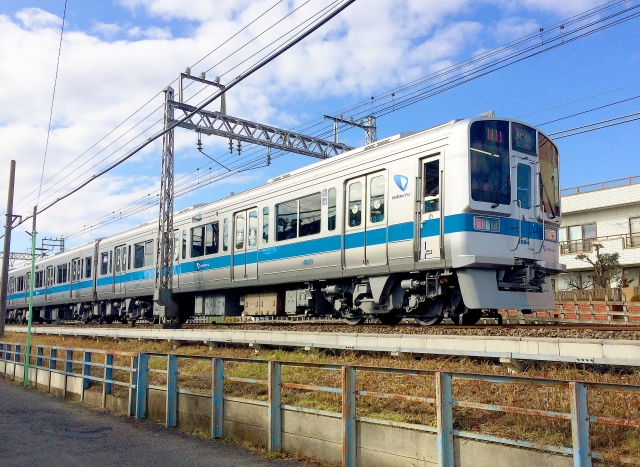
Photo by フォトステーション
Major cities in Japan, including Tokyo, Osaka, and Kyoto, also have extensive subway systems that efficiently connect different neighborhoods and attractions. Each city has its own subway network, so it’s important to research and understand the various lines, stations, and transfers. Tokyo, in particular, has a complex subway system with multiple operators. Something to note about the trains here is that after about 12:30 am most stations start to close and wont be back open until about 5 am. So be careful about staying out too late when youre out partying, you might just end up stranded!
Putting that aside, I think you should consider obtaining a rechargeable IC card, such as Suica, Pasmo or Manaka as well as many other cards, which allows for seamless entry and exit at pretty much every station in Japan, outside of the bullet train stations, without the need to purchase individual tickets. These cards can also be used for other modes of transportation, including buses and vending machines.
Speaking of buses, they are an integral part of Japan’s transportation system, offering extensive coverage, especially in areas with limited train access. Local buses are particularly convenient for short distances or exploring rural regions. City bus systems often have different fare structures, so be prepared with the correct change or consider using an IC card for hassle-free payment. Bus schedules are typically displayed at bus stops, and electronic displays inside the bus announce upcoming stops. English signage and announcements may be limited outside major cities, so it can be helpful to have a translation app or a basic understanding of Japanese numbers and place names.
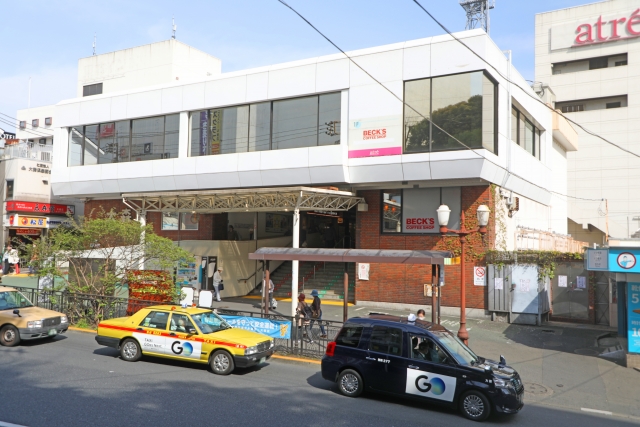
Photo by fujikiseki1606
Taxis are readily available throughout Japan, offering a convenient mode of transportation, particularly for late-night or door-to-door travel. Taxis are easily hailed on the street, found at designated taxi stands, or booked through a taxi app. While taxis can be more expensive compared to other transportation options, they provide a comfortable and efficient way to reach your destination.
Something to keep in mind is when the trains stop running after dark, most taxi companies will hike their rates for people out on the town for drinks. I have known people to pay over 30,000 yen for a taxi home after a long night of drinking and having fun. Also, when taking a taxi, remember to enter through the rear doors, as the front passenger seat is typically reserved for elderly or disabled passengers. Tipping is not customary in Japan, so the final fare displayed on the meter is what you pay.
Bicycles are a popular mode of transportation in many cities and towns throughout Japan, offering a healthy and eco-friendly way to get around. Japan has an extensive network of cycling paths, designated bike lanes, and bike-friendly infrastructure, making it safe and convenient for cyclists. Consider purchasing or renting a bicycle to explore your local area, run errands, or commute to work. Many train stations offer bicycle parking facilities, making it easy to combine cycling with train travel. Just ensure you follow traffic rules, including riding on the correct side of the road, using hand signals, and obeying traffic lights.
While public transportation is efficient and reliable in Japan, there may be occasions when renting a car becomes necessary or desirable. Expats living outside major cities or planning road trips to more remote areas may find renting a car to be a convenient option. International driving licenses are generally accepted in Japan, but it’s important to familiarize yourself with traffic rules, road signs, and driving customs, as they may differ from your home country.
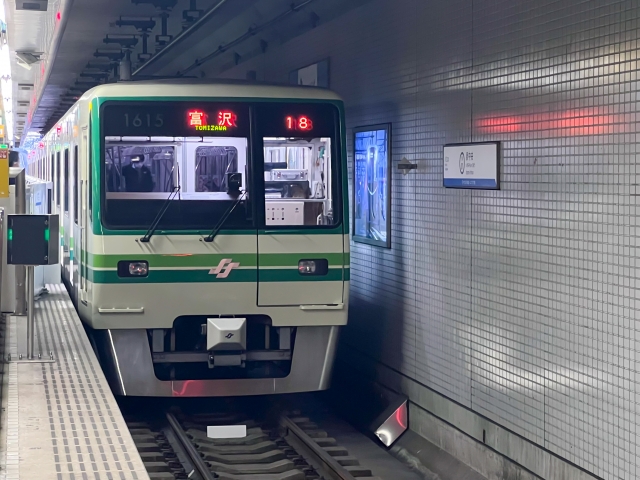
Photo by 時の記録者 Photo
Parking can be a challenge in urban areas, and fees can be quite high, so it’s advisable to plan your route and parking options in advance. Additionally, some areas, such as central Tokyo, have restricted zones where driving is discouraged or prohibited, so be aware of any local regulations or congestion charges that may apply.
Understanding and navigating the transportation system here is crucial for expats living in Japan. Trains provide speed, reliability, and extensive coverage, making them an excellent choice for long-distance travel. Subways efficiently connect urban areas, while buses offer flexibility and accessibility, particularly in areas with limited train access. Taxis are convenient for door-to-door travel or late-night trips, and bicycles offer a healthy and ecofriendly way to explore your local surroundings.
Renting a car can be advantageous for those living outside major cities or planning road trips. By familiarizing yourself with these various modes of transportation and their specific features, expats can navigate Japan with ease, whether it’s commuting to work, exploring the vibrant cities, or embarking on exciting adventures across the country.
Photo Credits:
Top photo: FUJIMARY on PhotoAC
Additional images by フォトステーション , fujikiseki1606 , 時の記録者 Photo
All other content (text) created by the original author and © 2023 MUSUBI by Borderlink
Top photo by Hadesさん on PhotoAC
Food poisoning, although an unfortunate event, can happen to anyone, even in countries known for their culinary delights. Japan with its rich and diverse cuisine is no exception. To protect your health and well-being while visiting Japan, it is important to know the necessary measures to prevent food poisoning. The purpose of this article is to share my experience as I give you a comprehensive guide to dealing with food poisoning while traveling in Japan.
Recognizing the symptoms
Symptoms of food poisoning can range from mild to severe. I personally experienced a rather severe one that could have been fatal if not for adequate measures taken. It is very important to recognize the signs early so that the necessary steps can be taken. Common symptoms include nausea, vomiting, abdominal cramps, diarrhea, fever, and fatigue. If you experience these symptoms after eating, suspect food poisoning and take immediate action.
Seek medical attention
The need to seek immediate medical attention in case of food poisoning can not be overemphasized. If you suspect food poisoning, it is recommended to consult a doctor immediately. In Japan, medical services are readily available and the healthcare system is very efficient. Visit a hospital, clinic or contact the emergency center (call 119). Report your symptoms and tell the medical staff about recent meals and allergies or pre-existing conditions.
This gets a little tricky for non Japanese language speakers because trying to explain the symptoms to the medical personnel who most likely speak only Japanese can be frustrating. As for my case, translation apps was adequate to inform my condition but not without delays and uneasy back and forth that would have been smoother if I could fluently speak Japanese language.
Helpful tips:
Stay hydrated
One of the main problems during food poisoning is dehydration caused by vomiting and diarrhea. Drink plenty of fluids, such as water, clear broths, and oral rehydration solutions, to prevent dehydration. Avoid alcohol, caffeine and carbonated drinks during this time, as they can make symptoms worse. I particularly made the mistake of taking coffee at the time and this didn’t help my recovery situation. As a matter of fact, it aggravated my condition.
Rest and recovery
Give your body enough time to rest and recover. Food poisoning can be physically exhausting, so prioritize rest and avoid strenuous activity. Follow your doctor’s instructions regarding any prescribed medications or dietary restrictions.
Keep a food diary
Before you get sick, it’s important to watch your diet. Note the names of restaurants, specific foods and ingredients, as this information can be crucial in reporting incidents or identifying potential sources of contamination if that’s the case.
Report the incident
Reporting the event to the appropriate authorities is essential to ensure public health and safety. In Japan, contact your local environmental health center or municipal office (Shiyakusho in Japanese) to report cases of food poisoning. Give them information about the suspected food, the time and place of consumption, and your symptoms.
Preventive measures:
Prevention is the key to avoiding food poisoning. Follow these guidelines when eating out in Japan:
- Choose reputable restaurants and businesses with good hygiene practices and high customer ratings.
- Make sure your food consumption is moderate and you don’t eat more than enough just because it taste good and you like it. Some of the ingredients used might not be suitable for excessive amount to be consumed.
- Be careful with raw or uncooked seafood, meat, eggs and unpasteurized dairy products.
- Wash your hands regularly with soap and water or use hand sanitizer before eating.
- Be careful when buying food from street vendors or at outdoor events, ensuring proper handling and storage of food.
Food poisoning can be an unfortunate occurrence when traveling in Japan. By recognizing the symptoms, seeking medical attention, staying hydrated and taking preventive measures, you can effectively treat food poisoning and minimize its impact on your trip. Remember to report incidents to the appropriate authorities to promote public health and safety. Stay informed and always put your well-being first.
Photo Credits
Top photo by Hadesさん on PhotoAC
All other content (text) created by the original author and © 2023 MUSUBI by Borderlink
Japanese people often ask foreigners; “Why did you come to Japan?” as a little conversation starter, but I think they should also ask; “Why did you stay in Japan?”. One answer I’d certainly give would be; “For the food of course!”.
Japanese food, as many who’ve tried it can attest, is some of the best-tasting and healthiest cuisine you could ever fit into your mouth. Ramen, sushi, and mochi are quite famous, but there’s so much more! Katsudon, unagi, gyudon, yakitori, onigiri (and the vast types of filling for them), and many more can be found (and eaten!) at countless restaurants and supermarkets.
My personal recommendation for new ALTs is to go shopping at a supermarket first, and to avoid eating at a restaurant every day. Even if you don’t know much about cooking, I can promise you that most Japanese dishes are quite simple to make, and that learning to cook for yourself is an invaluable and empowering skill to learn. It’s also a good way to make new friends (I’ve never met someone who refused a free meal!).
Enter the Supermarket
My first recommended stop is the produce aisle of a Japanese supermarket.

Photo by tsukuri
You can find many fresh ingredients here for a shockingly low price. Exercise caution however… some of the produce (especially water shoots, chopped green onion, and mushrooms) may have a very short shelf life and may expire in 2 to 3 days. If you notice an odd sour odor, then don’t eat it!
All of these ingredients can either be bought whole or pre-sliced. I recommend the pre-sliced options if you live alone and only cook for yourself. You can also find tofu and pressed fish patties (maruten) and use these with udon noodles. Udon soup base is also available for a low price. You will also find ramen, champon, and udon noodles close to the produce section. These noodles also expire quickly but are really inexpensive and convenient!
Past the produce section you may also find a meat section, with access to pork, beef, and chicken. I recommend going to AEON or D!rex for the most affordable meats. You can also find steak sauces in the beef section!
Be Prepared
Some days, especially during the rainy season, it may be best to have frozen or non-perishable food on hand so you don’t have to go out shopping so much. So, prepare at least one bag of rice, a couple of instant noodles, canned food, and maybe pack curry. This way you can stay home during a long storm, without having to fight your way through the weather to get food.
I strongly recommend that you try cooking udon daily, when you can. It is tasty, inexpensive, and easy on your digestive system. I think it can accommodate most people’s tastes and can easily be modified to their preferences if needed.
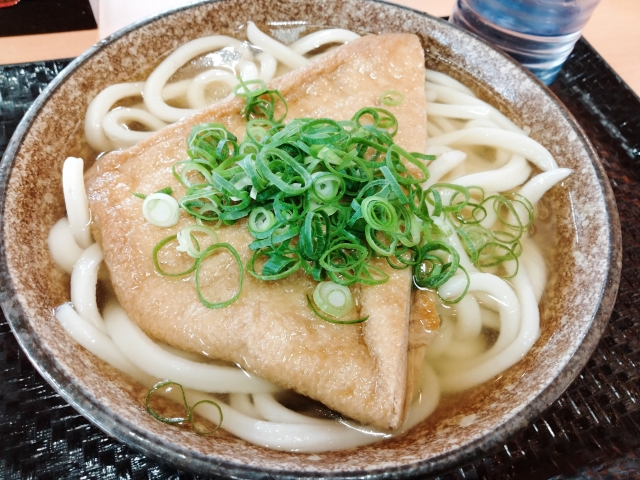
Photo by yukiitos
My personal udon dish is composed of 2 large tofu blocks, a couple maruten, udon soup base, chili flakes, sliced green onion, and udon noodles. The price can be below 300 yen, and the calorie count below 600. Other variations replace the tofu and maruten with beef, and another where I replace the soup with curry. I encourage you to try out your own combinations!
More Meal Ideas
Another dish I like to prepare is mapotofu, tofu blocks with beef and chili sauce over rice. I prefer to add a little extra pepper and green onion with mine. It is a heavy dish however, so only try it when you’re really hungry. You can usually find the mapotofu mixes near the tofu section, usually in red or black packaging. The tofu is sold separately, so be warned.
Finally, I encourage you to make your own gyudon bowl. This is a beef and onion over rice dish. You will be using the thin beef cuts, onion slices (you will need to slice your own onion I think), and gyudon sauce base (boxed and in powder form). You can also add a raw egg if you want!
Generally speaking, I think you will be hard-pressed to find any Japanese food that you don’t like. Most food is healthy, cheap, and super tasty. Just try to stick to making your own food from supermarket ingredients. It gives your meal the extra tasty ingredient of hard work!
Photo Credits:
Additional photos by tsukuri and yukiitos
All other content (text) created by the original author and © 2023 MUSUBI by Borderlink
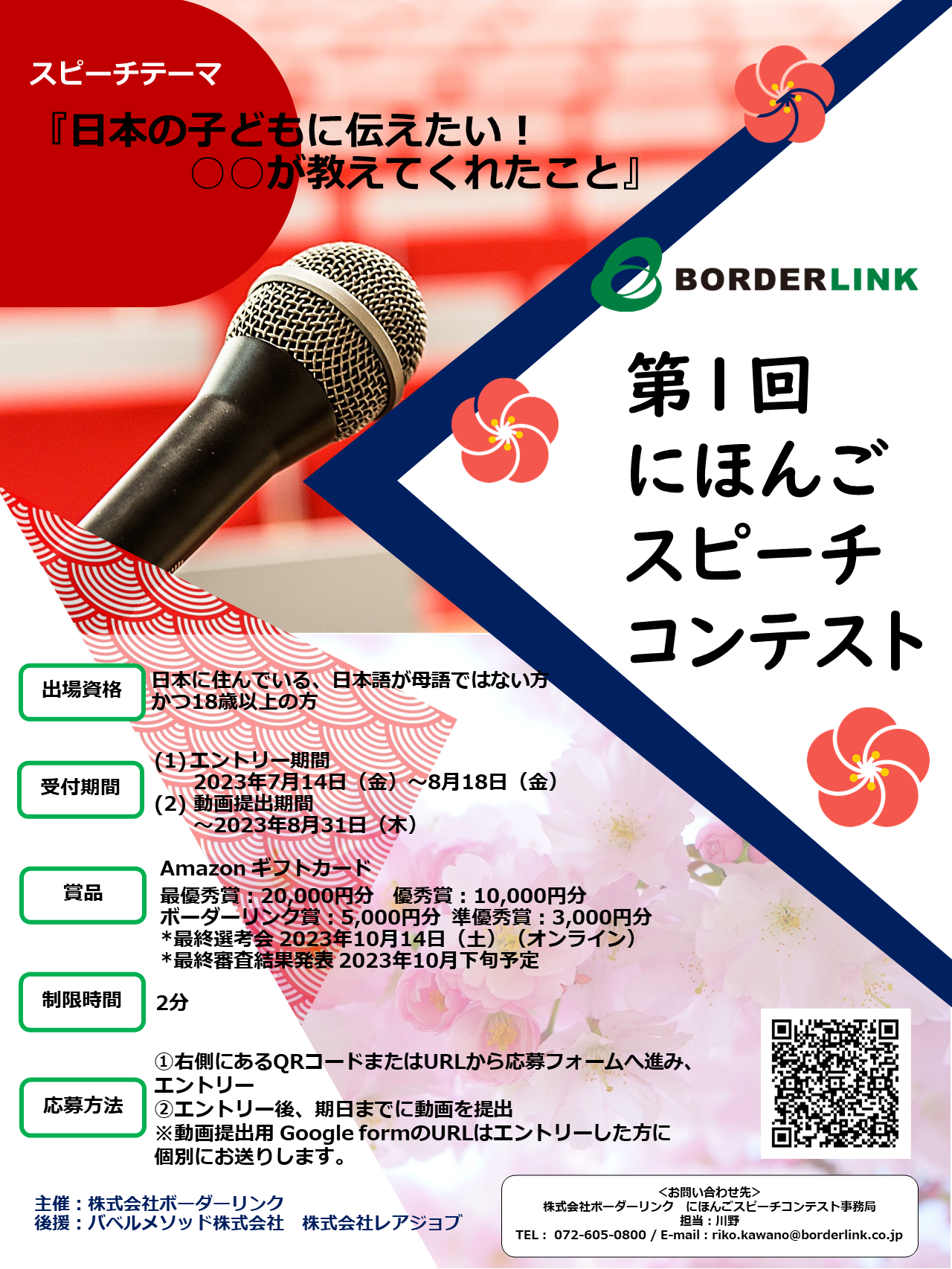
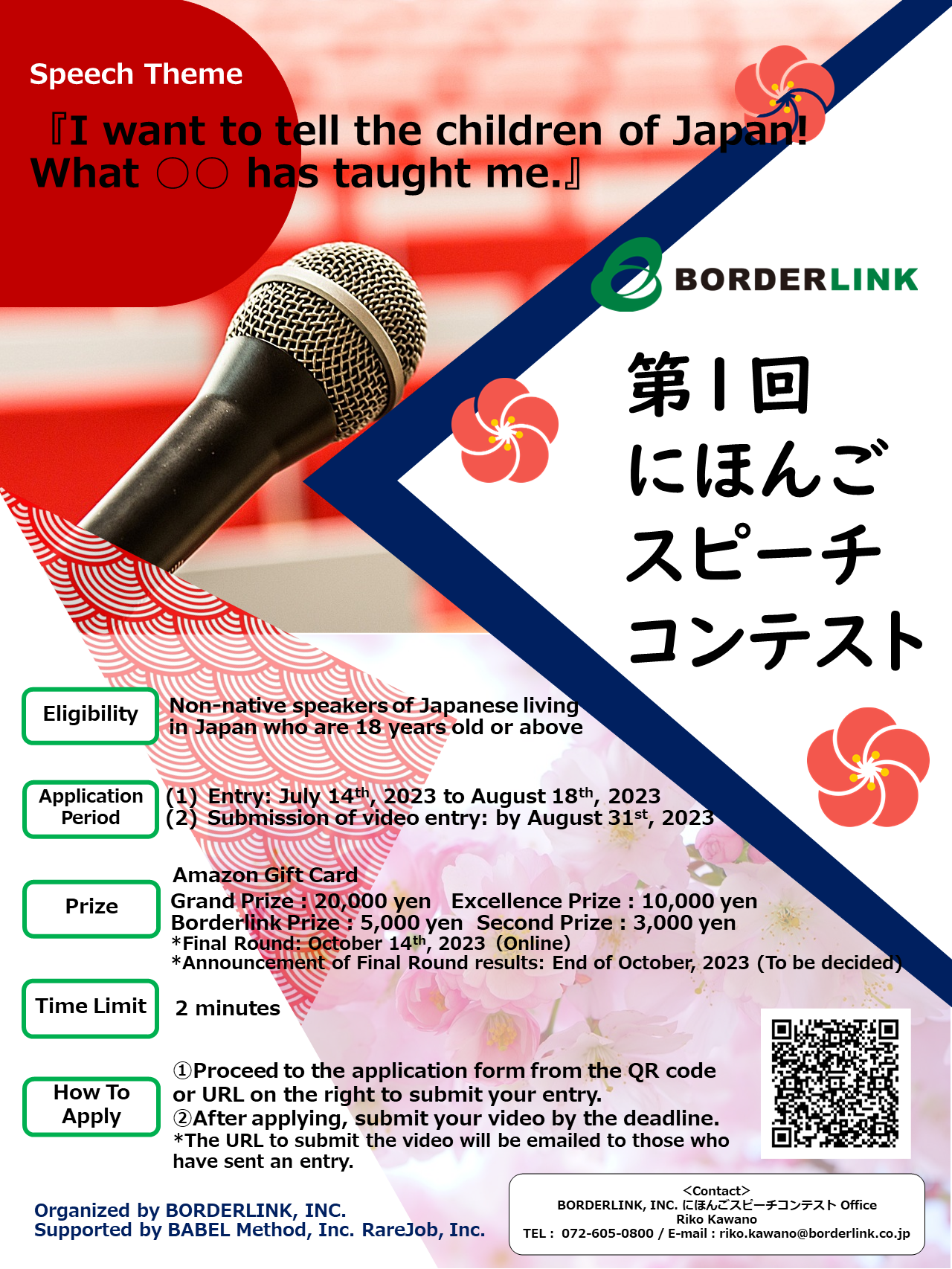
【参加者募集!「第一回 にほんごスピーチコンテスト」開催のお知らせ】
*English follows Japanese.
この度、ボーダーリンク主催の日本語スピーチコンテストを初開催します!
この機会に、皆さんの思いを日本語で発表してみませんか?是非ご参加ください!
<出場資格>
日本に住んでいる日本語が母語ではない18歳以上の方
<受付期間>
(1) エントリー期間:2023年7月14日(金)~8月18日(金)
(2) 動画提出期間:~2023年8月31日(木)
<賞品>
Amazonギフトカード(上位6名)
<テーマ>
日本の子どもに伝えたい!○○が教えてくれたこと
例)日本の電車が教えてくれたこと、おばあちゃんが教えてくれたこと 等
<制限時間>
2分
<応募方法>
ステップ1)下記のフォームからエントリー(8月18日締切)
https://forms.gle/HyBvk1LU3UMJ5hy6A
ステップ2)個人のYouTubeアカウントにスピーチ動画を「限定公開」でアップロード
ステップ3)受付完了メールに記載されている専用フォームから動画を提出
※エントリーされた方に、事務局から詳細を記載した受付完了メールを送付します。
※YouTubeアカウントを持っていない方は作成してください。
<スケジュール>
一次審査結果発表:2023年9月中旬頃
最終選考会:2023年10月14日(土)オンラインにて開催予定
最終審査結果発表:2023年10月下旬
******************************************************************************************************
[Now Accepting Entries! “Our First Japanese Speech Contest”]
We are pleased to announce that we are going to hold our first-ever Japanese speech contest for foreign residents living in Japan.
This is your chance to express yourself in Japanese! We look forward to you joining us!
【To Qualify】
Non-native speakers of Japanese living in Japan who are 18 years old or above.
【Entry Period】
(1) Entry Period: Friday, July 14th, 2023 to Friday, August 18th, 2023
(2) Video Submission Period: By Thursday, August 31st, 2023
【Prizes】
Amazon gift cards (Top 6 participants)
【Theme】
What I want to tell the children of Japan! What ○○ has taught me.
e.g.) What Japanese trains taught me, what my grandmother taught me, etc.
【Time Limit】
2 minutes
【How to apply】
Step 1) Submit your primary entry via the Google form below. (By August 18th)
https://forms.gle/HyBvk1LU3UMJ5hy6A
Step 2) Upload your video to your personal Youtube account.
Step 3) Submit your video via the Google form for video submission provided in the entry acceptance email.
* We will send you an acceptance email with further information shortly after.
* If you do not have a Youtube account, please create one.
【Schedule】
>Announcement of preliminary screening results: Mid-September 2023
>Final Round: Saturday, October 14th, 2023, to be held online
>Announcement of final screening results: End of October 2023
Studying in Japan? Planning to Job Hunt? 10 Steps to Get You Started!
Top photo: Hunters Race on Unsplash
Welcome to Best of MUSUBI, where we revisit articles from the past to breath new life into them with updated information and photos!
Are you studying at University or a Japanese Language School in Japan? Looking to stay in the country once your studies conclude? Not sure how to move forward once graduation day comes and goes? Well you’re in luck! We here at MUSUBI have prepared a short guide to help you get started. Here’s our top 10 steps to put you on the right path towards a future career in Japan:
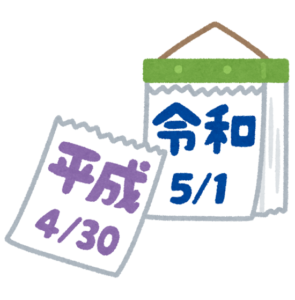 1) Start early!
1) Start early!
Don’t wait until 1 month before you graduate or until you have already graduated! Secure employment while you are still studying. It usually takes a few weeks to get all the documents you need for your visa application.
Once your application is in, it usually takes at least a month to process a visa. This means, that unless you’re lucky, you can expect to wait around 2 months before you can work. This might be difficult if your visa expires close to your graduation date, so get a head start!
 2) Do the research!
2) Do the research!
What industry do you want to work in? What are the general job requirements? How much is the average salary for a new employee? Do foreigners typically receive a different salary from Japanese employees? Will you be on a contract or will you have seishain (‘regular employee’) status? What companies are reputable and which are the ones to avoid? Do all this research then prepare, especially if you don’t meet all the requirements!

3) Dress the part!
It might sound like common sense, but you would not believe the amount of people (both foreigners and Japanese alike) who don’t wear a proper suit to job interviews. Japan in particular is very picky about appearances, so dressing up is a must.
To add to this, don’t forget to print some business cards for purposes of job hunting. Sure, you may not have a job just yet, but when you do get to the interview/orientation stages it can really help make a good impression to your prospective employers.
Finally, now that you have a new suit, be sure to take a few passport-style photos of yourself in your new suit for use on your resume and job applications. These can be taken at any photo kiosk you see around. Often they are located near or in train stations.
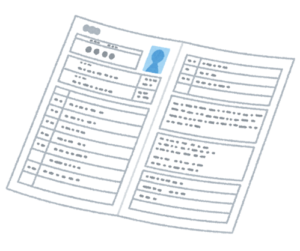 4) Prepare your resume- in English and Japanese
4) Prepare your resume- in English and Japanese
You never know what job you’re going to apply for, it’s better to have both an online copy and a hard copy of resume available to you in both English and Japanese. You can also adjust these easily in the future if you choose to change jobs later on rather than starting from scratch.
5) Initial Applications
Once you’ve got steps 2-4 ready, it’s time to begin the actual job hunting! Armed with the research you’ve done in step 2, apply to your first-choice companies directly if possible. Most companies in this day and age will have a “Careers” or “Recruiting” page with open positions. Sometimes, they may have an initial online application form to fill in before sending in your full resume, such as this one.
 6) Research job fairs
6) Research job fairs
Job fairs are easily the best way to look at jobs as it helps in-company recruiters get a gauge of your personality. You also have the opportunity to learn about individual companies and ask questions in preliminary interviews. You should also look at what job fairs will be in-person and which might be online.
 7) Networking
7) Networking
Now that you’ve been to job fairs and maybe made a few applications, network! There are plenty of career orientation social media websites out there. Go ahead and see if you can get in touch with any recruiters from any companies that have been contacting you actively. While you may not fit in their company, you never know when they might have friends in other companies who are looking for a candidate like yourself!
8) Contact Recruiters
Recruiters are another great way to find a job here in Japan. Often when you apply to companies directly you will need to jump through multiple hoops just to get your application in. With recruiters, depending on their reputation and relationship with each company you may be able to skip a few steps. However, be wary, depending on your individual recruiter your mileage may vary. Some just want to fill positions for the commission whereas some will really want to help you out as much as they can.
 9) Job Engines
9) Job Engines
Most foreigners living in Japan will most likely sign up for these as their first choice. Depending on what kind of job you are looking for, different job engines specialize in different types of industries.
10) Apply, apply, APPLY!
If you do use one of these engines, be sure to keep applying for different companies and keep a list!
Often when companies headhunt using these websites only a few details of your resume are visible, details such as e-mail addresses, parts of your work history will be hidden. These limitations are lifted typically once you’ve applied to a job on their platform.
 In addition to this starter guide, we recommend that you go further and look up each step and element individually. For example, what is the etiquette when handing an interviewer your business card? What is the etiquette needed when entering an interview room? What websites are more reputable? And so on. Especially when doing in-person interviews in Japan, it’s very important to know what to do and what not to do.
In addition to this starter guide, we recommend that you go further and look up each step and element individually. For example, what is the etiquette when handing an interviewer your business card? What is the etiquette needed when entering an interview room? What websites are more reputable? And so on. Especially when doing in-person interviews in Japan, it’s very important to know what to do and what not to do.
Furthermore, with the rise of remote interviews across Skype, Zoom and such, it’s important to remember that companies will still be looking for professionalism even if you aren’t in the same room as them. Find a nice, quiet space. Make sure your background isn’t distracting. Get dressed up. And always do a double-check of your microphone/webcam settings. Get in the habit of treating online interviews with the same seriousness that you would if you were going in person.
We hope that this starter guide has served its purpose and helped you gain a better picture of the application process here in Japan. We wish you the best of luck in your job hunt!
Photo Credits:
Top Image: Hunters Race on Unsplash
Additional photos provided by Irasutoya
All other content (text) created by the original author and © 2023 MUSUBI by Borderlink
Top photo by choco❁⃘*.゚ on PhotoAC
Summers in Japan can be notoriously hot and humid, with temperatures often reaching unbearable levels. However, don’t let the heat dampen your spirits or prevent you from enjoying the wonders of this beautiful country. In this blog, we will explore some valuable tips on how to stay cool during a Japanese summer, allowing you to make the most of your time while beating the heat.
Picture this: It’s a sweltering summer day in Japan, and the scorching heat is weighing you down. As you struggle to find relief, you remember a quirky habit of a close friend of mine. He used to soak his t-shirt before venturing out into the relentless summer sun, convinced it was the secret to staying cool. While I can’t say I adopted his exact method, I learned a thing or two about surviving a Japanese summer without resorting to such extremes. Let me share some practical tips to help you stay cool and comfortable during the hottest season in Japan, no t-shirt soaking required.
While my friend’s approach was unique, there are simpler and more accessible strategies that can help you beat the heat without going to such lengths. Let’s dive into some tried and true methods for staying cool during a Japanese summer.

Photo by 【FW】フォトグラファーK
What to Wear
Choosing the right clothing can significantly impact your comfort level during the summer months. Opt for lightweight, breathable fabrics such as cotton and linen, which allow air circulation and prevent excessive sweating. Loose-fitting clothes in lighter colors can also help reflect sunlight, keeping you cooler. Don’t forget to wear a wide-brimmed hat and sunglasses to protect yourself from the scorching sun.
What to Drink
Proper hydration is crucial to combat the intense heat and humidity. Always carry a water bottle with you and drink water frequently throughout the day, even if you don’t feel thirsty. You can get 2-liter bottles very cheaply across Japan coming to about 100 yen at convienence stores and if you think ahead, I have seen them for 50 at supermarkets and department stores.
Using and reusing these bottles are a cheap and effective way of staying hydrated during the brutal Japanese heat. Additionally, Japanese summers offer various refreshing options like chilled tea, barley water, or popular summer drinks like mizudashi (cold brewed coffee). These hydrating beverages can keep you cool while enjoying unique local flavors.

Photo by うみかぜ
Where to Go
Japan offers several cooling destinations that provide respite from the summer heat. Head to the mountains for a cooler climate and enjoy scenic hikes or visit the northern regions like Hokkaido, which experience milder temperatures. Coastal areas and islands also offer refreshing sea breezes, making them ideal summer getaways. Explore famous attractions like Mount Fuji’s base or relax in Okinawa’s stunning beaches for a perfect blend of adventure and relaxation. Ask your students which they prefer, mountians or beaches, it is a hotly (pun intended) contested debate among Japanese people, especially students on which they prefer in the summer.
What to Do
Learn from the Japanese locals and embrace traditional methods of staying cool. Use a handheld fan (uchiwa) or a folding fan (sensu) to create a gentle breeze wherever you go. I haven’t tried it myself but there are ways in which you can fold a normal piece of paper to have it be more durable when fanning yourself. Try wearing a traditional yukata, a lightweight summer kimono made of breathable fabric, which is not only fashionable but also helps in regulating body temperature. You can also experience the art of tea ceremonies or visit Japanese gardens that offer a tranquil atmosphere, often shaded by lush greenery.
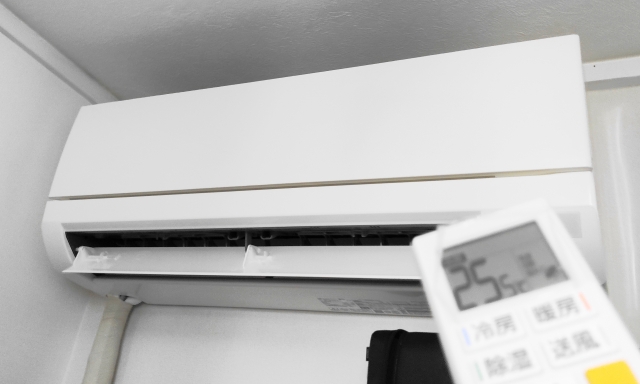
Photo by 旅するししゃも
Get Indoors
Japan is renowned for its unique and innovative approach to beating the heat. Seek out modern cooling facilities like shopping centers, museums, and art galleries that offer efficient air conditioning systems. Best part about that is its free! When using the aircon at home you have to pay your electric bill, and if you can handle hanging out in a library or coffee shop than it’s a great way to cool off. You can escape the outdoor heat and explore the airconditioned wonders of indoor attractions like Tokyo’s massive shopping malls, where you can indulge in retail therapy while staying cool.
Get Outdoors Too
Plan your outdoor activities wisely by avoiding the peak heat hours, typically between 11 a.m. and 3 p.m. Instead, schedule your excursions early in the morning or late afternoon when the temperatures are relatively cooler. This allows you to explore famous landmarks, visit local markets, or embark on outdoor adventures without feeling overwhelmed by the heat. Don’t miss out on the vibrant summer festivals known as “matsuri” that take place across Japan.
There are likely some even closer than you think! These festivals feature lively parades, traditional dances, and dazzling fireworks displays. While they can be crowded, the atmosphere is often filled with excitement and joy. Enjoy the festival food, participate in traditional games, and immerse yourself in the culture while relishing the occasional cool breeze.
A Japanese summer can be challenging, but with proper planning and a few cooling strategies, you can navigate through the scorching heat and have a memorable experience. Dress appropriately, stay hydrated, seek out cooling destinations, and embrace the traditional techniques practiced by the locals. Remember to savor the unique flavors and vibrant cultural events that make summer in Japan an extraordinary adventure.
Stay cool, stay hydrated, and make unforgettable memories!
Make your own unforgettable memories during the Japanese summer! Become an ALT for the Spring 2024 school year! Apply today and learn more through our preliminary orientation seassions!
Photo Credits:
Top photo by choco❁⃘*.゚ on PhotoAC
Additional photos by 【FW】フォトグラファーK, うみかぜ and 旅するししゃも
All other content (text) created by the original author and © 2023 MUSUBI by Borderlink
Welcome to Best of MUSUBI, where we revisit articles from the past to breath new life into them with updated information and photos!
July is widely considered the beginning of the swimming and mountain climbing season. It’s the end of the first semester of school and the beginning of summer break. The days get hotter and the drinks get cooler. And, early in the month, we have 七夕 or Tanabata (Star Festival), one of the most beloved traditions of all.
The Legend of Tanabata
Tanabata was introduced to Japan by the Empress Kōken in 755. Its origins lie in the Qixi Festival of China, which was also adopted in the Kyoto Imperial Palace in the Heian Period. Today, Tanabata is celebrated in Japan every year on the 7th day of the 7th month.
The most popular story behind the festival is that Orihime (represented by the star Vega) met and feel in love with Hikoboshi (represented by the star Altair) but in doing so angered her father Tentei (天帝, “Sky King”, or the universe itself). They were separated by the Amanogawa (天の川, “Milky Way”, literally “heavenly river”) but are allowed to meet one day a year.
Early July is said to be is the best time to see the Milky Way in the night sky. Thus, the legend was born. There are some variations where one of the two is human and the other a heavenly being, but the most common version takes a more allegorical approach.
In olden times, people made offerings to the gods using seasonal fruits and vegetables. In thanks for a good wheat harvest, they also presented thin noodles made from wheat known as somen. Today, these noodles are one of the many familiar foods enjoyed during Tanabata.
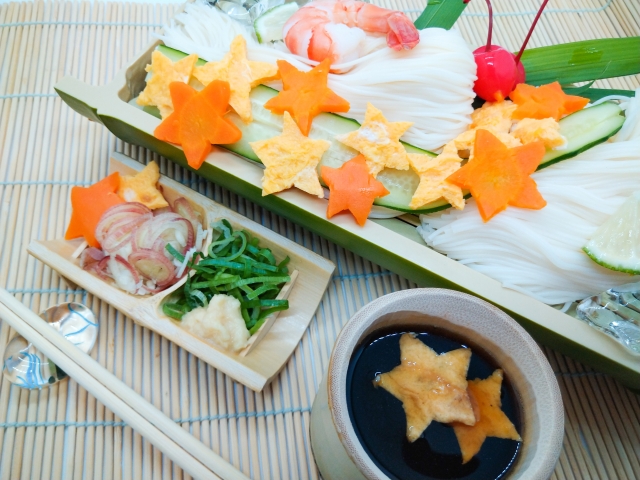
Tanabata Traditions
Traditionally, children used this event as a time to exhibit their writing. They wrote prayer for improved calligraphy on narrow strips of paper and hung them from bamboo branches. This tradition continues today. People generally celebrate this day by writing wishes, sometimes in the form of poetry, on tanzaku (短冊) small pieces of paper, and hanging them on bamboo.
Bamboo branches are used for Tanabata decorations because of their straight yet supple characteristics. On July 8th (the day after the festival) it has been the custom to burn or float the decorations down a river and pray for evil spirits to be carried away at the same time.
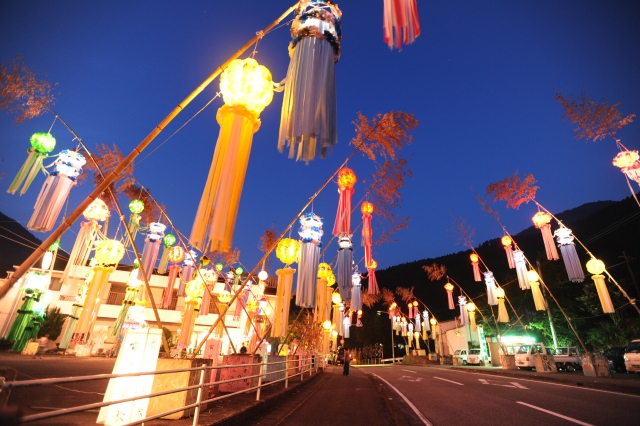
Some Tanabata decorations will remain up throughout July, so even after the festival is officially over, you can still enjoy remnants of it. If you’re in Sendai, it has a particularly excellent Tanabata festival. So don’t forget to take a look at the night sky this summer, and think of the Star Festival!
Photo Credits:
Additional Photo 1: しずく8さん on PhotoAC
Additional Photo 2: ma737さん on PhotoAC
All other content (text) created by the original author and © 2023 MUSUBI by Borderlink
Top photo: 最後の旅人custom on PhotoAC
The “World” of Japan Post Bank ATMS
Banking in Japan can be rough. Want to set up a bank account when you don’t speak, let alone read, Japanese can be like playing ‘Elden Ring’; difficult, frustrating, infuriating but super gratifying when completed. However, the challenges don’t stop there. Want to use an atm? There’s an English option! But the moment you hit that English button, sometimes half to nearly all the options disappear. It’s not so bad if you just want to deposit or withdraw money, but what if you want to send money or update your phone number using the atm? Here’s some pointers to help.
Let’s start with the basics
Withdrawing and depositing money at an ATM is the most common use. The kanji for deposit is 預け入れ. Insert your card and next a PIN will be asked for before the desired amount of money you want to withdraw. If, like me, you are too lazy to keep tapping 0 when inputting 20,000. You can hit the 万 button instead. So 2 then 万 will get you 20,000円(yen). You can also use 千 to withdraw in just the thousands. So 5 then 千 will get you 5,000円(yen).
The kanji for withdraw is 引き出し. Again, insert your card and you will ask for a PIN to be entered. Then you can insert your money into the open slot. The machine will calculate and confirm the amount you have deposited. Once you confirm the amount, usually the screen will display an updated bank balance, or a receipt will be printed out.
If you wish to check your bank balance after a fun night out. Select 残高照会. You will need to enter your PIN and your balance will be displayed. Some ATMS will also give you the option to print out your bank balance. But perhaps you want your bank balance and recent transactions printed out, you can update your bank book by selecting 通帳記入 and then inserting your bank book into the now open bank book slot. The ATM will update your bank book before returning it to you.
Pretty easy, right? But what if you want to send money to the nice Nigeria Prince in the neighbouring prefecture?
Sending the dough
This one will vary depending on your bank, so this is based on using a JP Bank ATM. First you need to select remittance or ご送金 in kanji. Then, if you are sending to another bank, 他行口座へのご送金, a warning screen about fraudsters will appear so you can hit next or 次. Next you will be asked to insert your bank card or your bank book and for a PIN. Now this is the hardest part, finding the bank you are sending to. It’s best to go in with the kanji, katakana and romaji already written for this.
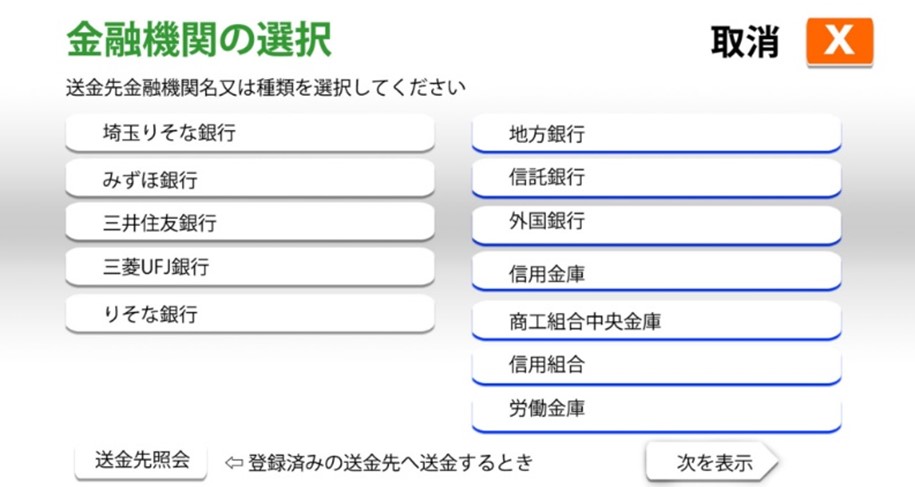
The common banks are on the left of the screen, the less popular are in the menu on the right. The right menu is as follows:
| 地方銀行 | Local bank |
| 信託銀行 | Trust Bank |
| 外国銀行 | Foreign Bank |
| 信用金庫 | Credit Union |
| 商工組合中央金庫 | Shoko Chunin Bank |
| 信用組合 | Credit Union |
| 労働金庫 | Labour Bank |
Once you have found the bank, you will need to find the branch using katakana. However, the branch name will probably in kanji or hiragana or a mixture of both. (Worse comes to worse, you can awkwardly as someone who is waiting to help you find the bank branch, I have done it a few times and most people understand. If there’s no one there to help, use the camera function on the google translate app. It’s a slow process, but it works.)
Next, we are hitting the easier part, you choose what type of bank account 普通預金 (ordinary), 当座預金 (checking), or 貯蓄預金 (saving) that the money is going to and then enter in an account number. Then the amount of money you want to send and you will have to confirm the amount by hitting 確認.
If you do notice a mistake, hit 訂正 (amend). You may also be asked to enter your name. Usually it’s already there and you just need to confirm by hitting はい. Insert your phone number and hit 確認 and then you’re good to go. You have sent money within Japan! There are plenty of videos on YouTube showing how to do this if you still feel unsure.
What else do these things do?
Sending money overseas is for another day, as we are focusing on using an ATM.
Some ATMS will let you update your personal details. Again, looking at JP Bank, it’s surprisingly easy when you know which menu to use. You need to select 暗証番号•引き出し上限額変更 and on the next screen 電話番号変更. Insert your card and enter your PIN. A screen showing your old phone will appear and you want to tap the 確認 button. The next screen will allow you to update to your new phone number, enter your new number and confirm with 確認.
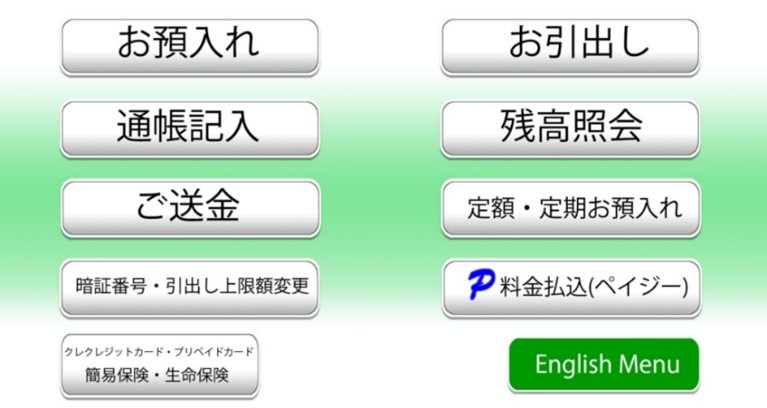
The next screen will again confirm both the old and new numbers. If you see a mistake you can tap 訂正 to amend any mistakes. If everything is ok, hit 確認 and the system will update your new phone number. The ATM will return your card and you can go enjoy the rest of your day. Unfortunately for JP Bank, if you need to change your address you will have to go to the counter with your new address on your residence card.
The 暗証番号•引き出し上限額変更 option will also let you change you PIN number. Instead of selecting 電話番号変更, select 暗証番号変更 instead. Then you will be asked to insert your bank card and then enter your current PIN number, after that you will be asked to enter a new PIN and to re-enter it to confirm it. The system will update to your new PIN and return your card.
Banking in Japan can be challenging but it doesn’t have to be a complete headache. There are videos on how to do the basics hidden in the algorithm of YouTube and plenty of websites that have all the different kanji translated. At least for now, I can access my money to buy all the Pokemon trading cards I want from my local Pokemon Center.
Photo Credits:
Top photo: 最後の旅人custom on PhotoAC
Additional Photos by Rushi Dai.
All other content (text) created by the original author and © 2023 MUSUBI by Borderlink
